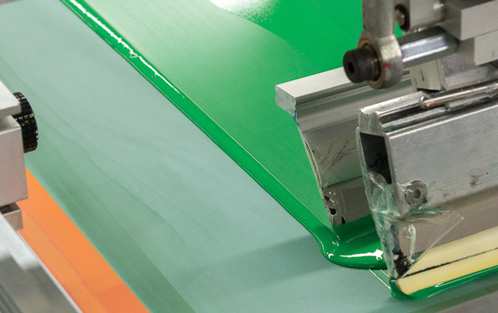
Material Science
Makrofol – thermoplastic films (made of Makrolon)
Makrofol® is the brand name of the thermoplastic films that have been developed by Bayer. They consist of the polycarbonate Makrolon®. One of the strong points of Makrofol is its high heat resistance, which allows for a high degree of toughness and elasticity over a wide range of temperatures. In addition, Makrofol offers stiffness, electrical […]
Makrolon®, an enormously versatile material/plastic/polycarbonate
Ever since Bayer patented the polycarbonate Makrolon® in 1953, this multifunctional plastic has been used in a great many fields. Makrolon® can be found among other things in everyday objects like eyeglass lenses, films, medical equipment, sports helmets, auto headlights, water containers, solar modules, protective floor mats, panels for carports and greenhouses, as well as […]
Engineering polyester films (Mylar, Hostaphan, Melinex)
Polyester films Mylar is a transparent, flexible polyester film based on polyethylene terephthalate. This film appears milky or frosted with the increasing thickness of the material. Mylar’s features are an outstanding resistance to moisture and common solvents. It can be used at temperatures from -70 °C to 150 °C. Since it doesn’t contain any emollients, […]
POM Polyacetal –> Sustarin
Polyacetal (POM, also polyformaldehyde) is a high-crystalline thermoplastic. POM is used as an engineering plastic especially for precision parts because of its high degree of stiffness, low friction coefficient and outstanding dimensional and thermal stability. It also features a high degree of strength, hardness and stiffness in a wide range of temperatures. Polyacetal maintains its […]
PA Polyamide –> Sustamid
Polyamides (PA) are organised into various types with different characteristics according to their physical properties. The main properties of the polyamides include high mechanical strength, stiffness, hardness and toughness, good fatigue strength, as well as a high vibration absorption capacity and good sliding and emergency operating features. In addition, they have very high wear resistance, […]
PS Polystyrene
Polysterol (PS) designates a transparent, white foamed, amorphous or partially crystallized thermoplastic. Amorphous polystyrene is a very common plastic that is contained in many everyday products. Polystyrene is used as a thermoplastically processed material or as foam (expanded polystyrene). A common trade name for polystyrene foam is Styrofoam. The properties of PS include resistance to […]
Fibre-reinforced plastics –> Durostone
Durostone is a fibre-reinforced plastic that is used in a variety of areas, for example, in chemical and maritime applications, where resistance to aggressive media and thermal stability up to 180 degrees Celsius are significant. Furthermore, Durostone fasteners are also used for construction projects as an alternative to steel, since Durostone is substantially lighter and […]
PETG –> Axpet
Polyethylene terephthalate glycol-modified (PETG) is a durable and long-lasting material for interior applications. PETG has favourable product qualities, is food-safe, resistant to chemicals, virtually inflammable and can be very easily thermally worked. Furthermore, it has outstanding mechanical properties. It is used for machine covers, glazing, shop fitting and trade fair construction, as well as in […]
PMMA acrylic glass XT / GS / Continuous Cast
Acrylic glass (PMMA, Plexiglas®) possesses good optical and mechanical properties. The crystal clear thermoplastic PMMA, the abbreviation for polymethyl methacrylate, is used for ophthalmic and other types of lenses, greenhouses, and skylights. Acrylic glass is popular in model making due to its versatility and transparency. The name Plexiglas® as a term for acrylic glass originated […]


